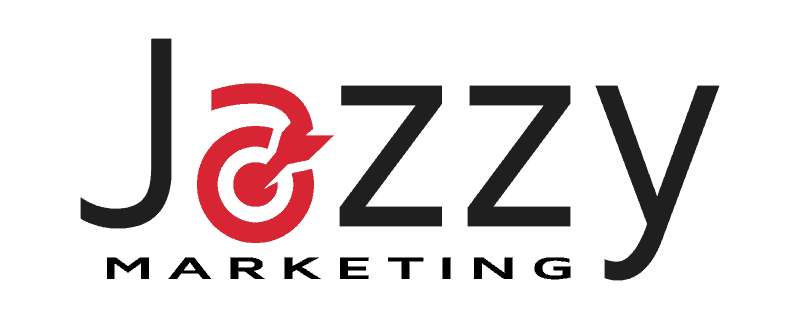Search engines drive traffic to your content. SEO plays a crucial role in this process. You need to create SEO-friendly content to enhance visibility. This approach boosts your content’s reach and effectiveness. Content SEO: Creating SEO-Friendly Content becomes essential for success. Readers find value in well-optimized articles. Engaging content keeps visitors on your site longer. SEO-friendly content improves search rankings. This strategy benefits both creators and audiences. Understanding SEO’s importance helps you stay competitive.
Understanding Content SEO: Creating SEO-Friendly Content
What is Content SEO?
Content SEO involves optimizing your articles to rank higher in search engine results. The key concepts include keyword usage, meta tags, and readability. Each element plays a role in how search engines perceive your content. Search engines use algorithms to assess the relevance of your content. Proper optimization ensures that your articles appear in relevant searches. This increases the likelihood of attracting more visitors.
Content visibility improves with effective SEO strategies. High visibility means more people find your content. More traffic leads to greater engagement and potential conversions. Search engines reward well-structured and informative content. Your articles gain authority and trustworthiness. This enhances your online presence and credibility.
Why Content SEO Matters
Content SEO offers numerous benefits for creators. You can reach a wider audience with optimized content. Engaging articles attract more readers and keep them on your site longer. This increases the chances of conversions and interactions. Your content becomes a valuable resource for users.
Digital marketing strategies rely heavily on SEO. Content SEO forms the backbone of these strategies. Effective SEO ensures that your content aligns with user intent. This alignment boosts your content’s relevance and appeal. A strong SEO strategy sets you apart from competitors. Your content gains an edge in the digital landscape.
Expert Testimony:
“Testimonials may verify if advertised features deliver on their promises and align with your specific SEO requirements.”
Content SEO: Creating SEO-Friendly Content remains crucial for success. You must understand its importance to stay competitive. Embracing these strategies enhances your content’s impact. Your efforts lead to better search rankings and visibility.
Conducting Effective Keyword Research

Importance of Keyword Research
Effective keyword research forms the backbone of Content SEO: Creating SEO-Friendly Content. You need to identify target keywords to align your content with user search intent. This alignment ensures that your content reaches the right audience. Search engines favor content that matches what users are looking for.
Identifying target keywords involves understanding your audience’s needs. You should focus on terms that potential readers use. Tools like Google Keyword Planner and SEMrush help in this process. These tools provide insights into search volume and competition levels. AI-driven SEO tools offer deeper insights into keyword effectiveness. This technology helps you make informed decisions.
Tools for keyword research enhance your ability to find valuable keywords. You can use tools to analyze trends and discover new opportunities. Keyword rankings monitoring tools consider SERP features. These features include snippets and image packs. Understanding these elements boosts your content’s visibility.
Integrating Keywords into Content
Integrating keywords effectively is crucial for Content SEO: Creating SEO-Friendly Content. You should follow best practices for keyword placement. Keywords should appear naturally within your content. Search engines reward content that flows smoothly. Readers appreciate content that feels authentic.
Best practices for placement involve using keywords in titles and headings. You should also include them in the first paragraph. This strategy helps search engines understand your content’s focus. Avoid overloading your content with keywords. Keyword stuffing harms readability and search rankings.
Avoiding keyword stuffing is essential for maintaining quality. You should prioritize user experience over keyword density. High-quality content engages readers and encourages longer visits. This engagement signals to search engines that your content is valuable.
Content SEO: Creating SEO-Friendly Content requires careful keyword integration. You must balance optimization with readability. This approach enhances your content’s impact and reach.
Structuring Content for SEO

Importance of Content Structure
Content structure plays a vital role in Content SEO: Creating SEO-Friendly Content. A well-structured article enhances readability and helps search engines understand the content better. Proper structure guides readers through the information logically, making it easier to digest.
Using Headings and Subheadings
Headings and subheadings organize content effectively. They break down information into manageable sections. This approach allows readers to scan the article quickly. Search engines use headings to determine the main topics of your content. Clear headings improve SEO by signaling the relevance of each section. AI SEO tools can assist in evaluating the effectiveness of your headings. These tools provide insights into how well your headings align with search queries.
Creating a Logical Flow
A logical flow ensures that content follows a coherent order. Each section should build on the previous one. This method keeps readers engaged and interested. A logical progression of ideas enhances understanding. Search engines reward content that presents information logically. AI-driven tools can help analyze the flow of your content. These tools suggest improvements to enhance clarity and coherence.
Enhancing Readability and Engagement
Readability and engagement are crucial for Content SEO: Creating SEO-Friendly Content. Engaging content captures the reader’s attention and encourages longer visits. Readable content improves user experience and boosts SEO performance.
Use of Bullet Points and Lists
Bullet points and lists make information more accessible. They highlight key points and simplify complex ideas. Readers find lists easy to follow and understand. Search engines favor content that uses lists effectively. Lists improve the chances of appearing in featured snippets. AI SEO tools can evaluate the use of lists in your content. These tools offer suggestions to optimize list placement and format.
Incorporating Multimedia Elements
Multimedia elements enhance the visual appeal of your content. Images, videos, and infographics engage readers and provide additional context. Visuals break up text and make articles more interesting. Search engines recognize the value of multimedia in content. Properly optimized images and videos contribute to SEO success. AI tools can assist in optimizing multimedia elements. These tools analyze file names, alt text, and loading times for better performance.
Content SEO: Creating SEO-Friendly Content requires careful attention to structure and readability. Well-organized content attracts readers and improves search rankings. AI tools offer valuable insights to enhance your content’s effectiveness. Embrace these strategies to create impactful and engaging articles.
On-Page Optimization Techniques
Optimizing Meta Tags and Descriptions
Crafting effective meta titles
Meta titles serve as the first impression of your content in search results. A well-crafted meta title captures attention and encourages clicks. Search engines use meta titles to understand the topic of your page. Effective meta titles include primary keywords and maintain relevance. The length of a meta title should not exceed 60 characters. This ensures that the entire title appears in search results without being cut off.
Scientific Research Findings:
Impact of Meta Tags and Metadata on SEO: Meta tags and metadata significantly improve website ranking in search engine results. They provide relevant and descriptive information about a webpage.
Writing compelling meta descriptions
Meta descriptions offer a brief summary of your page content. A compelling meta description entices users to click on your link. Search engines display meta descriptions below the meta title in search results. An effective meta description includes target keywords and a clear call to action. The ideal length for a meta description is between 150-160 characters. This length ensures that the description is fully visible in search results.
Improving URL Structure
Best practices for SEO-friendly URLs
SEO-friendly URLs contribute to better search rankings. A clear and concise URL helps users understand the page content. Search engines prefer URLs that include relevant keywords. Avoid using unnecessary words or characters in URLs. A simple URL structure improves user experience and navigation. Consistent URL patterns across your site enhance overall organization.
Importance of clean and descriptive URLs
Clean URLs enhance readability and trustworthiness. Descriptive URLs provide context about the page content. Users are more likely to click on URLs that appear organized and informative. Search engines favor URLs that accurately reflect the page’s topic. A well-structured URL can improve click-through rates from search results. Clean URLs also facilitate easier sharing and linking by users.
On-page optimization techniques play a crucial role in improving search visibility. Meta tags, descriptions, and URLs contribute to a well-optimized webpage. These elements enhance user experience and search engine understanding. Implementing these techniques leads to higher rankings and increased traffic.
Measuring and Analyzing SEO Success
Tools for Tracking SEO Performance
Google Analytics and Search Console
Google Analytics provides insights into website traffic. You can track user behavior and identify popular pages. This tool helps you understand how visitors interact with your content. Search Console offers data on search performance. You can monitor keyword rankings and click-through rates. This information aids in optimizing content for better visibility.
Other SEO Analysis Tools
Other SEO tools offer additional insights. SEMrush analyzes competitor strategies. You can identify gaps in your content and improve your approach. Ahrefs provides backlink analysis. You can discover opportunities to enhance your link-building strategy. Moz offers domain authority metrics. You can assess the strength of your website compared to competitors.
Interpreting SEO Metrics
Understanding Traffic and Engagement Data
Traffic data reveals how many users visit your site. You can analyze which pages attract the most visitors. Engagement data shows how long users stay on your site. High engagement indicates valuable content. Low engagement suggests areas for improvement. Understanding these metrics helps refine your content strategy.
Making Data-Driven Improvements
Data-driven improvements enhance SEO performance. You can adjust keywords based on search trends. Content updates align with user interests. Improved readability boosts user experience. Enhanced multimedia elements increase engagement. Regular analysis ensures content remains relevant and effective.
Creating SEO-friendly content involves several key strategies. You should focus on effective keyword research and integration. Structuring content for readability and engagement is crucial. On-page optimization techniques enhance visibility. Measuring SEO success helps refine your approach. Applying these strategies boosts your content’s performance.
SEO constantly evolves, so staying updated is essential. Embrace AI SEO tools to make informed decisions. Optimizing meta tags and metadata improves search rankings. SEO remains vital for reaching online audiences. Implement these practices to enhance your digital presence.

